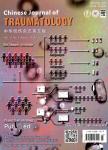A minimum data set for traumatic brain injuries in Iran
A minimum data set for traumatic brain injuries in Iran作者机构:Department of NeurosurgeryImam Hossein HospitalShahid Beheshti University of Medical SciencesTehranIran Department of PsychologyHELP UniversityKuala LumpurMalaysia Sina Trauma and Surgery Research CenterTehran University of Medical SciencesTehranIran
出 版 物:《Chinese Journal of Traumatology》 (中华创伤杂志(英文版))
年 卷 期:2022年第25卷第5期
页 面:283-292页
核心收录:
学科分类:0403[教育学-体育学] 1002[医学-临床医学] 100210[医学-外科学(含:普外、骨外、泌尿外、胸心外、神外、整形、烧伤、野战外)] 10[医学]
基 金:This study was supported by grant number 43012 from Sina Trauma and Surgery Research Center Tehran University of Medical Sciences Tehran Iran
主 题:Traumatic brain injuries Registries Data systems
摘 要:Purpose: Traumatic brain injury (TBI) is one of the major public health concerns worldwide. Developing a TBI registry could facilitate characterizing TBI, monitoring the quality of care, and quantifying the burden of TBI by collecting comparable and standardized epidemiological and clinical data. However, a national standard tool for data collection of the TBI registry has not been developed in Iran yet. This study aimed to develop a national minimum data set (MDS) for a hospital-based registry of patients suffering from TBI in Iran. Methods: The MDS was designed in 2 phases, including a literature review and a Delphi study with content validation by an expert panel. After the literature review, a comprehensive list of administrative and clinical items was obtained. Through a two-round e-Delphi approach conducted by invited experts with clinical and research experience in the field of TBI, the final data elements were selected. Results: A MDS of TBI was assigned to 2 parts: administrative part with 5 categories including 52 data elements, and clinical part with 9 categories including 130 data elements. Conclusion: For the first time in Iran, we developed a MDS specified for TBI consisting of 182 data elements. The MDS would facilitate implementing a TBI’s national level registry and providing essential, comparable and standardized information.



